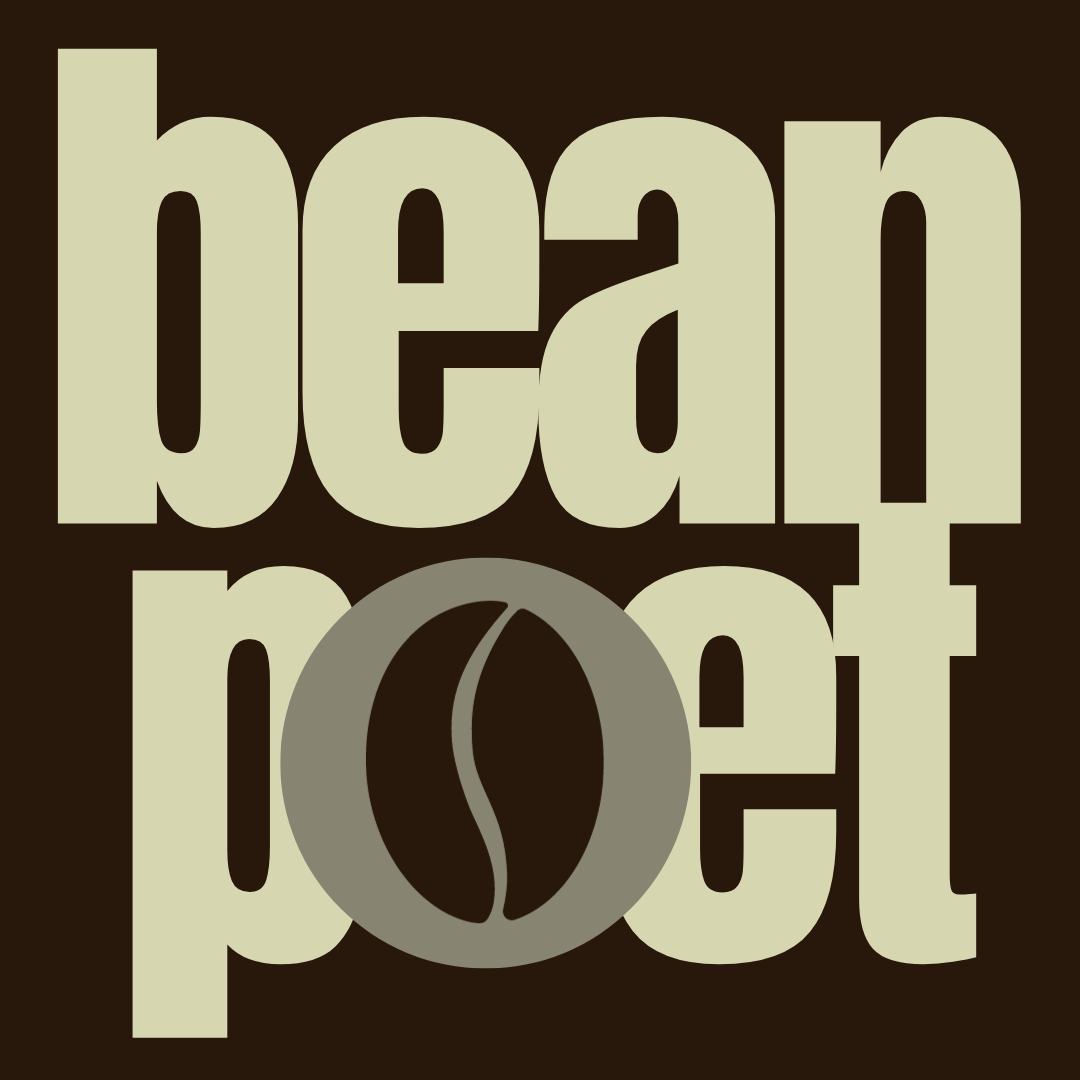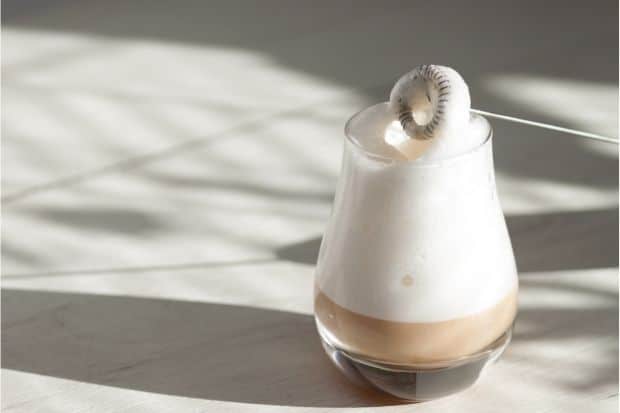Last Updated on December 3, 2023
If you want to make barista-style drinks at home, a basic coffee maker isn’t going to cut it.
Many of your favorite coffee shop specials require specialized equipment.
Milk is one of the key components of many coffee drinks—but should you invest in a milk steamer or milk frother?
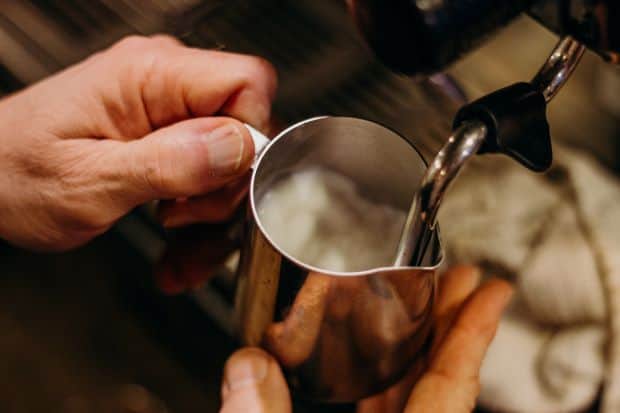
What’s the Difference Between a Milk Frother vs. Steamer?
The main difference between a milk frother and steamer is that the frother whisks air in without heating the milk up much. The froth will be tall, foamy, and light. Steamers, meanwhile, use heat and pressure to add tiny bubbles. They create a velvety texture with a flatter microfoam.
There are many different steamers and frothers on the market. These range from simple manual devices to fine-tuned pieces of kitchen equipment. Let’s take a look at what’s out there and see which one you’ll need to make your favorite drinks….
What Is a Milk Frother?
A milk frother uses movement to add air to milk. It works kind of like a whisk, but milk frothers tend to have a more efficient design. Instead of long minutes of wrist-straining whisking, you push down on a plunger or hit a button on a milk frothing machine.
Types of Milk Frothers
Many milk frothers are electric devices, but you can find simpler low-tech solutions as well.
Handheld Milk Frothers
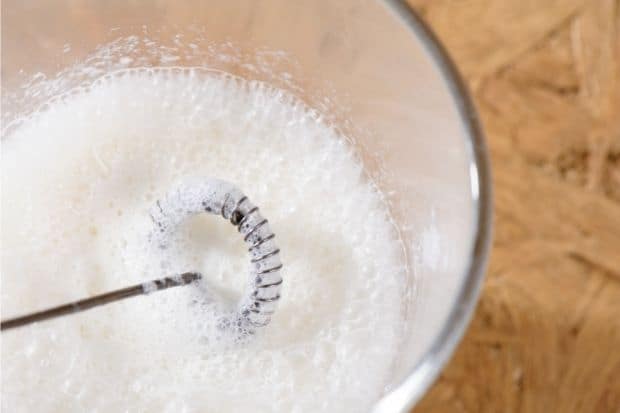
Handheld frothers are electric or battery-operated. You hold them in your hand while frothing milk. An automatic frother can be a hand mixer or a frothing wand with special tips. Automatic milk frother devices are fairly inexpensive. They give you a lot of control over the final product as you can watch how frothy the milk gets. You can make cold foam at home using a handheld milk frother.
Manual Frothers
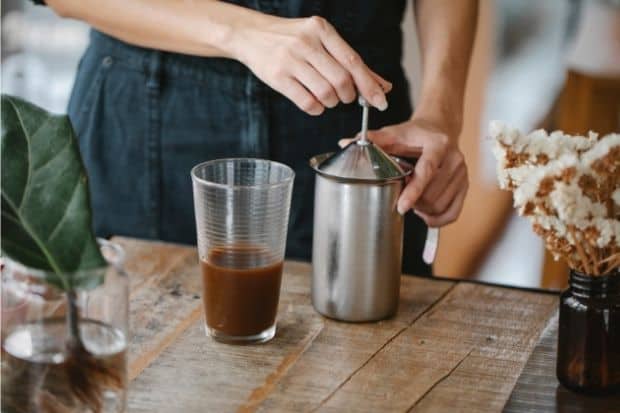
Manual milk frothers use a hand-pumping action instead of an electric motor. They look similar to a French press. You pour the milk into the chamber, put on the plunger and lid, and pump the handle. This works air into the milk. It’s an affordable way to produce a smaller amount of milk foam.
Jug Frothers
Jug frothers are either stand-alone models or attachments on a drip coffee machine. They have a frothing jug and a base that needs to be plugged into a power socket. These both warm milk and froth it up. They’re portable and easier to use than electric milk steamers, but not as versatile.
If you’re hunting for a great milk frother, check out our list of the best electric milk frothers out there right now.
What Is a Milk Steamer?
A milk steamer pumps pressurized steam through a vessel. This has two key effects. It lightly cooks the milk, breaking down the fats and heating the lactic acid. It also creates a microfoam of tiny, uniform bubbles.
Types of Milk Steamers
There are many options on the market, from the classic espresso machine attachment to independent units.
Automatic/Electric Milk Steamer
An electric milk steamer machine has an inner boiler that heats water to high-pressure steam. That pressurized steam is then forced through a tube into the milk.
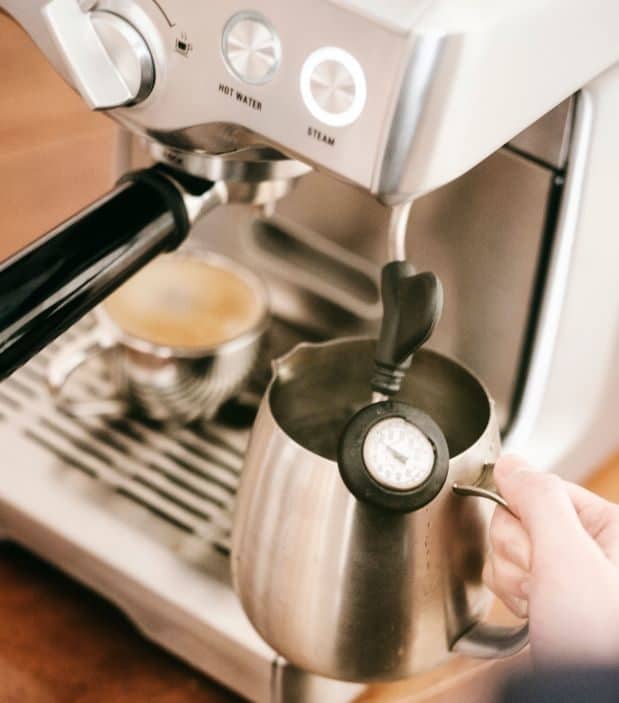
Many espresso machines have these as attachments. If your current coffee setup doesn’t, you can find standalone models.
Automatic milk steamers give you direct control over the process. Many of these types of milk steamers have gauges that let you keep an eye on the steam pressure levels. They may also have vacuum breakers. These keep leftover milk from sucking back into the boiler and tainting the water in there.
Stovetop Milk Steamer
These work on a similar principle to standalone steamers. Instead of plugging the unit into the wall, you heat it on the stove. Once the water has boiled into steam, you can pump it through your milk. The big advantage here is that you don’t need a free outlet. Stovetop models also don’t have electronic components that could break down on you.
What Are the Key Differences Between Frothed and Steamed Milk?
Although they may sound like similar products, frothed and steamed milk look different. They also have a subtly different taste and react very differently in drinks.
Frothed milk has a mix of small and large bubbles. The froth tends to be tall and ‘dry,’ holding its shape fairly well. This foamy milk has a fairly neutral milk taste. Foamed milk is a great topping and can be used to lighten a heavy drink.
Steamed milk is made of tiny bubbles, all about the same size. The steaming process that heats the milk gives it a thick texture and a satiny sheen. Steamed milk tends to taste more strongly of rich dairy. It also has enough body to not mix immediately with coffee. This makes it the better choice for latte art.
There is overlap between these two categories. Some electric milk frothers can heat up the milk during the frothing process. Meanwhile, if you adjust your steamer technique, the resulting milk will have a head of froth and a less distinctively steamed texture.
This allows a skilled home barista to make both kinds of milk with just one device, but it’s not the easiest or most reliable method. You’ll need to practice to get consistent results when you’re using a steamer to froth milk and vice versa.
How To Froth Your Milk Like a Pro
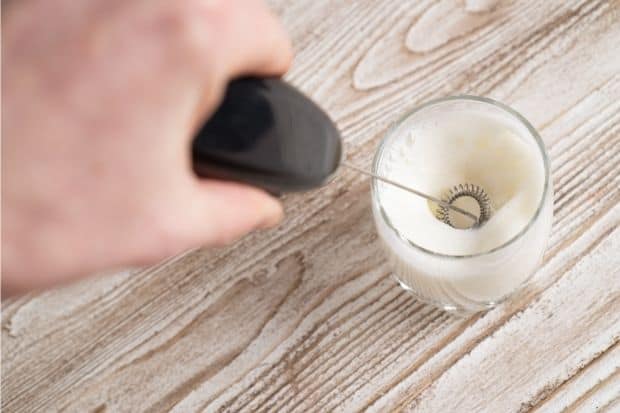
- Start by using less milk than you think you’ll need. The cold foam increases in volume by up to 3X.
- Give the milk a quick shake or mix to start adding air.
- Use your frother of choice.
- Don’t worry if it splits into a liquid and a bubbly layer after frothing. That’s normal.
- For more and longer-lasting froth, start with cold milk or chilled milk. You can also use a type of milk with higher fat content.
Check out this useful post if you’re wondering which milks you can froth.
How To Steam Milk Properly with a Steam Wand
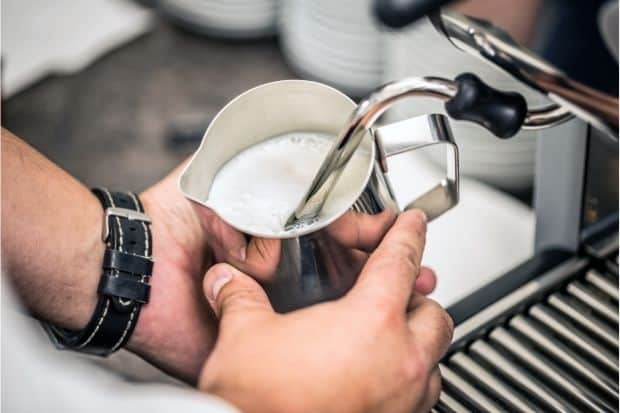
- Turn on your steamer and give it a minute to heat up.
- Place the tip of the steam wand just under the surface of the milk. If you don’t see a vortex in the pitcher, adjust the angles.
- You want the milk to heat evenly for 20-60 seconds. It will increase in volume, but not as much as frothed milk.
- Stop steaming when the liquid hits 135-140°F (57-60°C). Overcooking the milk proteins will affect the taste and texture.
What Kind of Drinks Can You Make with Steamed and Frothed Milk?
The sky’s the limit for an inventive home barista who’s playing around with recipes.
Traditional coffee recipes use steamed milk with:
- Latte
- Cafe au Lait
- Caffe Marocchino
- Cafe Miel
Meanwhile, frothed milk is typically used to make:
- Cappuccino
- Macchiato
- Flat White
- Frappe
Which One Is Right for You: Milk Steamer or Milk Frother?
What kind of milk-based drinks do you like? The list above should help you make a decision. But if you like to switch it up with many different kinds of coffee, you might want a dual-purpose machine. They tend to be more expensive and trickier to use, but they’ll give you the greatest flexibility as you prep your drinks.
Are You Ready To Start Frothing and Steaming at Home?
The right investment in coffee-making equipment isn’t necessarily the most expensive item or the one with the most bells and whistles. Instead, you’ll want a piece that will expand your options to include your favorite drink of choice and more.
A steamer, frother, or multi-use device can help you up your barista game and get that cafe experience from home.
